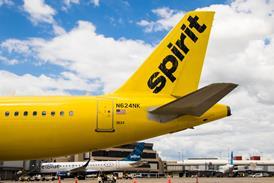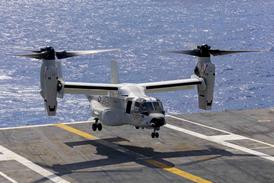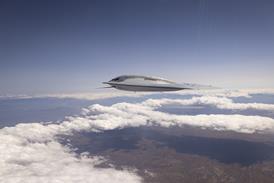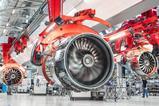French start-up Beyond Aero is confident it can hit twin milestones this year: concluding the preliminary design review (PDR) for its BYA-1 hydrogen-powered business jet and wrapping up a triple-digit Series B funding round.
In March, the Toulouse Francazal airport-based developer disclosed an updated configuration for the BYA-1 – or simply One – which now features hydrogen storage outside of the fuselage in wing-tip and ‘shoulder’ tanks and a 2.4MW fuel cell system powering twin electric ducted fans.

Yannick Schwartzenbart, head of programme industrialisation, anticipates no further changes to the design as the Beyond team works to complete the PDR by end-2025.
A critical design review will follow around one year later, he says, with the aim of freezing the design in early 2027, ahead of service-entry in the early 2030s.
While Beyond has yet to disclose the supply chain for the jet, Schwartzenbart says it has already identified what it considers the top provider for each system and is working to “onboard them as soon as possible” and “improve the aircraft from an engineering point of view”.
Schwartzenbart says the firm is taking a “pragmatic approach” to the development, leaning on suppliers rather than developing its own systems from scratch.
“Our goal is to work with well-established partners that will supply main component assemblies,” he says.
Outsourced components include the powertrain – the fuel cell system using six 400kW stacks, electrical distribution and the 1MW-class electric ducted fan engines, each generating thrust of 2,810lb (12.5kN).
But at 1.2m (4ft) diameter, those engines are substantially larger than those found on conventionally powered business jets of a comparable size. For instance, the 3,600lb-thrust Williams International FJ44-4A turbofans that equip the Pilatus PC-24 have a fan diameter of just 64cm.
Schwartzenbart says the larger fans are required to achieve the intended thrust rating due to the lower shaft power expected from the electric motors.
Bench tests of the fuel cell stacks, their balance of plant and the control system is ongoing using two rigs at Beyond’s Toulouse facility to “see the behaviour”.
Despite its lower volumetric energy density, Beyond has opted for gaseous rather than liquid hydrogen, believing it offers a quicker and more certain route to market.
“If we want to go fast in the market and have infrastructure on the ground it has to be gaseous,” he says.

Gaseous hydrogen pressurised at 700bar is “something that exists today and is a standard that is manageable and possible in the timeline we have”.
Other developers in the hydrogen aviation space are looking at retrofit solutions rather than clean-sheet designs, but Beyond believes its approach is the right one if it wants to deliver the 800nm (1,482km) range and 360kt (667km/h) cruise speed promised.
“We are convinced that is right way to do it. We are convinced the powertrain is so central to the aircraft and the design so intrusive that we need to build the aircraft around it,” says Schwartzenbart.
But developing a new aircraft from scratch does not come cheap: Beyond estimates it will require “a minimum” of €500 million ($567 million) to bring the BYA-1 through certification in the European CS-23 category.
To date, it has raised $44 million, including $20 million from a Series A round that concluded in October last year. A Series B round seeking at least $100 million is in its early stages and should be finalised by year-end, he says.
“It will cover part of the industrialisation so it will be quite a big amount.”
In the meantime, Beyond continues to analyse where it might build the BYA-1. Schwartzenbart says although a preferred location has been identified discussions remain in progress.
He declines to offer more detail but says sites in the south of France are favoured due to the deep pool of aerospace engineering talent available.
While Beyond ultimately has ambitions to develop a bigger aircraft, it sees the CS-23 category as perfect for its current goals.
“It is really the right segment where we can bring the technology to the market, demonstrate that it works, become a real OEM and then we can go for bigger,” he adds.































